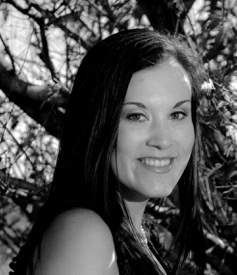collaborative learning
Select an item by clicking its checkbox

Reimaging Doctoral Education as Adult Education (New Directions for Adult and Continuing Education, Number 147)
Date Reviewed: October 18, 2017
This book answers the question “Why not?” to Robert Smith’s (professor of adult education in the doctoral program at Northern Illinois University) statement, “Higher education is not adult education” (1). There are nine chapters by contributors who place importance on adult education as a collaborative methodology within a doctoral program. Each contributor reflects on their own principles and practices for reimagining doctoral study for adult educators, faculty, and administrators within higher education. Many of the contributors give real life experiences either as faculty or students of a doctoral program at National Louis University.
Tom Heaney (Chapter 1) shares how the cohort-based program provides a space for doctoral students to critically reflect as a group, take control of their own learning, and assume ownership of the curriculum for which they can negotiate with faculty. He views democracy within a doctoral program as “unleashing the power of we” which allows the students see themselves as agents of change through the collective voice of intellectual discourse. Building a democratic forum is not an easy task, but it requires trust, discipline, and confidence among doctoral students and faculty (11).
Stephen Brookfield (Chapter 2) notes that there are four lenses through which practitioners within education view their thinking and actions: student’s eyes, colleagues’ perceptions, theory, and autobiographical experiences. He emphasizes that professors and instructors need to get into the habit of stating out loud the reasons why they are doing what they do: readings, participation in class, order of curriculum, and the evaluative process (17-18).
Nadira K. Charaniya and Jane West Walsh (Chapter 5) reflect on their experience as doctoral students and how collaborative learning partnerships were central to their peer relationships. They recall five outcomes: (1) deep trust and respect, (2) the conscious selection of one another as learning partners, (3) mutual striving toward common goals, (4) different but complementary personality traits, and (5) the development of synergy (49). They include a detailed case of their own journey as collaborative research partners where they created the Collaborative Inquiry Metaphor Creation and Analysis Method (CIMCAM) which involves the use of metaphor analysis as a research analysis. They share through a graphic representation the five steps to their research methodology (53) as well as focused group dialogue of the visual metaphor process. The outcome is the shift of power between research facilitators and participants as a means of collaborative co-construction of knowledge (56).
The volume is an easy read. Each chapter could provide insight for doctoral programs in any discipline. It could also be a useful resource within a school of theology even though the focus of the book is a doctoral program at a private non-profit higher education institution. The authors explore the question of why it is important to reimagine doctoral education as adult education. In the introduction the editor claims, “An obvious goal of adult learners is to find their own voice, to be heard in rational discourse with their peers, and to gain control over the day-to-day decisions that affect their lives” (5). The book underscores the point that collaborative learning within a doctoral program is central to adult education.

Enhancing Teaching and Learning Through Collaborative Structures (New Directions for Teaching and Learning, Number 148)
Date Reviewed: November 30, -0001
This volume of collected articles provides snapshots of collaborative teaching and learning in action at US universities. While the authors describe a range of techniques and structures, there is an emphasis throughout on intentionally building and sustaining communities composed of teachers, learners, and even community partners.
Richard A. Gale (“Learning in the Company of Others”) and Jeffrey L. Bernstein, et al. (“How Students, Collaborating as Peer Mentors…”) illustrate the positive effects of collaboration in college courses. Gale succinctly articulates numerous benefits of collaborative teaching, from increasing fruitful ambiguity that can inspire critical thinking, to providing teachers with opportunities for “the systematic investigation of student learning” (21). Bernstein’s experience working with students as peer mentors shows that a collaborative approach to class leadership can embolden students to take risks with low stakes, improving their participation in brainstorming and creative activities.
The majority of authors convincingly demonstrate that collaborative learning offers students benefits far beyond the immediate course or program experience. Ellen G. Galantucci and Erin Marie-Sergison Krcatovich (“Exploring Academia”) emphasize that their experience as undergraduate collaborative learners helped them prepare for their later work in graduate school and as educators. These authors note that the mentoring they received contributed to their professionalization and enabled them to discuss pedagogy confidently on the academic job market.
Multiple articles address the potential for fruitful collaboration with community partners beyond the university. “Collaborative Structures in a Graduate Program,” by Robyn Otty and Lauren Milton, describes a multi-year Centralized Service Learning Model (CSLM) that combined the work of two graduate courses and several community programs. In their article “The Development of a High-Impact Structure: Collaboration in a Service-Learning Program,” Brooke A. Flinders, et al. illustrate students’ internalization of high-impact learning outcomes, including “participation in meaningful work” (44).
One important contribution of this text is the collection of students’ testimonies. A number of the authors asked course participants to complete some form of self-assessment. Overwhemingly, students who worked as peer mentors or group leaders reported gaining confidence, independence, critical thinking skills, and practical experience that could be used in the professional world. In Flinders, et al., “The Development of a High-Impact Structure,” young professionals in the nursing field provided feedback about ways their participation in the service-learning program helped them prepare for clinical work.
This volume offers a wealth of suggestions for designing learning communities; Milton D. Cox’s contribution (“Four Positions of Leadership…”) identifies traits that administrators and facilitators have found to be essential when organizing faculty learning communities. Each article clearly explains its authors’ methodology, making this a helpful resource for teachers who are looking for direction in implementing collaborative learning strategies. While it might have been helpful in some cases to learn more about how community partners assessed the contributions of university teams to their work, overwhelmingly the articles demonstrate that collaborative learning is beneficial for students and teachers. For those looking to build more collaboration into their courses, this set of articles provides inspiration and concrete guidelines

Attuned Learning: Rabbinic Texts on Habits of the Heart in Learning Interactions
Date Reviewed: November 30, -0001
According to the publisher’s website, books in the series “Jewish Identities in Post-Modern Society” are dedicated to exploring the “multiple ways in which contemporary Jews express and define their Jewish identity.” The titles in the series “explore the sociological, historical, and psychological basis for these identities and the ways in which they reflect a rejection and or integration of the norms, morals, and values of post modern society.” Elie Holzer’s Attuned Learning is the eleventh contribution to that effort and his second contribution to the series.
The purpose of the series helps to explain the approach that Holzer takes to his subject: Part One is devoted to “Conceptual Frameworks;” Part Two focuses on what “attuned learning” means for the “co-learners” devoted to the task; Part Three unpacks the implications of the theoretical framework for reading Rabbinic literature that Holzer outlines in Part One; and Part Four briefly explores the implications of his work for “Contemporary Contexts.” The nature of the series also explains why Holzer relies heavily on Hans-Georg Gadamer and Paul Ricouer, among others, for the philosophical assumptions that drive his work (20, 22-30). Arguing that “there is no such thing as an innocent reading” of any text, Holzer contends that the only antidote to self-deception is an honest effort “to clarify what lies at the basis of our interests as far as possible” (22-23). Students reading ancient texts must identify the “foremeaning or preconceptions” that shape their reading (24) and they must avoid “identifying the meaning of the text with the author’s intention. Instead, a text establishes its own form of discourse as soon as it is written, offering something to be appropriated by the reader” (26).
Having laid out his philosophical assumptions, Holzer then describes the attuned learning that both teachers and students can accomplish, using the discourse in rabbinic literature as an illustration, source, and foil. “Argumentative learning” can be found there and has its contribution to make (47ff.), but – as Parker Palmer notes -- it is also “doubled edged” and can degenerate into “a secretive, zero-sum game played by individuals for private gain” (57).
At the heart of rabbinic exchange, however, is what Holzer describes as chavruta, which he translates as “‘companionship’ or ‘friendship’” (41, n. 5). Attentive to the moral and emotional quality of the learning process and the roles that each co-learner plays, even conflict is placed in very different context. Teachers and students advance in their understanding by listening to one another, for which “the divine presence” or the “Shechina” (71ff.) is a metaphor and “‘God’ is understood primarily as some transcendent quality of a genuine interpersonal experience” (73).
Teachers who recognize the importance of chavruta and the perils of argumentative learning are alert to the experiences of the learner and avoid the dynamics that lead students to experience their teachers as “uncaring” (112f.), “disgruntled” (114f.), or “incompetent” (116f.). Instead, Holzer argues, they are to attend to the “visage” of their students. They “see” their faces (129-130) and they look for “illumination” (130ff.). Likewise, the students “welcome” the faces of their teachers (135ff.) and receive the “visage” of their instructors (138ff.), indicating their willingness to enter into the partnered learning that has been offered.
The result is a process in which “educators… never allow their active and curious presence to transform the learners’ presence into a shadow of their learners,” but “stimulate learners to live a critically conscious presence in the pedagogical and historical process” (159).
There is a good deal to be absorbed here for the theological educator, especially as an antidote to teaching that is either sterile and concerned with subject matter alone or views the student as an object of deconstruction. As Holzer describes it, both approaches are equally immoral (149-150 and ns. 12 and 13). Theological educators will also find reasons to differ with the author. Writing for a broader and not necessarily religious audience, Holzer defines God and God’s presence in ways that are scarcely adequate if one conceives of God as more than a metaphor.
Given the richness of the rabbinic tradition, one also wonders whether we might have learned even more, if Holzer had allowed the rabbis to reflect on what they believed about God as both a teacher and a student of Torah (88ff.). But, given his philosophical assumptions, that gift is strained through sieve of post-modern philosophy, skeptical as he is of innocent readings, let alone the voice of God. One wonders whether deeper attunement might have entertained the possibility that there was another Visage, longing to be welcomed into the conversation.
As an anthropologist of religion, I have advocated that the skills one develops in an ethnographic setting are necessarily translated to the classroom. I’m a proponent of creating a space for students to serve as experts and to speak to their own experiences—especially when addressing contemporary political movements ...
Allow me to be honest. There are few things in my job that I dislike more than having a conversation with someone who is feigning objectivity or neutrality. I call it academic pretense. I cherish conversations when people speak from their hearts, even if I disagree with them. This holds ...

